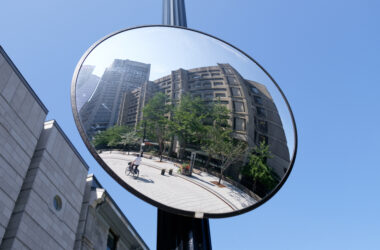With the recent dump of snow and freezing temperatures, global warming is probably the last thing on the minds of most Montrealers.
While global warming may sound favourable when it’s -21 degrees celcius outside, for some it’s a daily threat. Each year the Maldives loses three of its inhabited islands to rising sea levels.
With an average altitude of 1.5 metres above sea level, the Maldives compose the world’s lowest laying country. Located in the Indian Ocean, just off the southern tip of India, it spans 90,000 square kilometres, and it’s made up of some 200 inhabited islands. Other islands are used for tourism, agriculture, or other livelihood purposes. Fourteen of the inhabited islands have already disappeared under the ocean.
The Maldivian capital, Malé, has already taken precautions against the rise in sea level. A three metre high sea wall was constructed to keep the ocean out, costing the country tens of millions of dollars. Using the Intergovernmental Panel on Climate Change’s most dramatic climate change forecast, it’s predicted that if the sea rises by 59 centimetres in the next century, the Maldives will be rendered virtually uninhabitable.
Out of neccessity, the country has now come up with contingency plans.
A popular surfing destination, the Maldives has a $600 million tourism industry. It’s saving some of this money to allow it the option of buying land in another country, which will enable citizens to relocate if their homes and islands are in jeopardy. Places under consideration include India, Sri Lanka, and Australia. However, no official talks have occurred yet and Maldivian president Mohamed Nasheed said that this is a last resort. Other suggested plans include floating islands and desalination.
In order to raise awareness of the issue, President Nasheed attended and walked the red carpet at the 2011 Toronto International Film Festival for the premiere of the documentary, The Island President. The documentary details his struggles as president to save his country from literally disappearing under the ocean. President Nasheed has also pledged to make the Maldives completely carbon neutral by 2020.
While the fate of the Maldives lies largely out of his hands, he is working hard to do his part for his country. Yet, with the recent difficulties in negotiations between the world’s leading countries in Durban, South Africa this past November, it is hard to predict the future of climate change responses.
It’s difficult for countries like the Maldives to remain optimistic given the circumstances. In a speech given this past September at the London School of Economics, president Nasheed said that “Both developing countries and developed countries have the responsibility [to fight climate change].”
“I understand that we are suffering now … because of the West and all that development,” he said, “but even if they all go to sleep tonight and we go to bed as usual and we go to business as usual, and the developed countries don’t do anything for the rest of our lives, we are still going to die.”
Not shying away from strong assertions, he criticised the current negotiation process, stating, “I don’t think we have the time to nicely go on talking about the issues endlessly and I am told that science suggests that we have a window of about seven years and if we are unable to bring a drastic change in these seven years we will soon meet a tipping point from which it will be very, very difficult to pull back.”
“This is 2011, the science is very, very certain and you can’t be so silly and stupid, countries and leaders have to realize that this is happening.”









Pingback: The Maldives struggle for survival | Kyla Mandel Portfolio